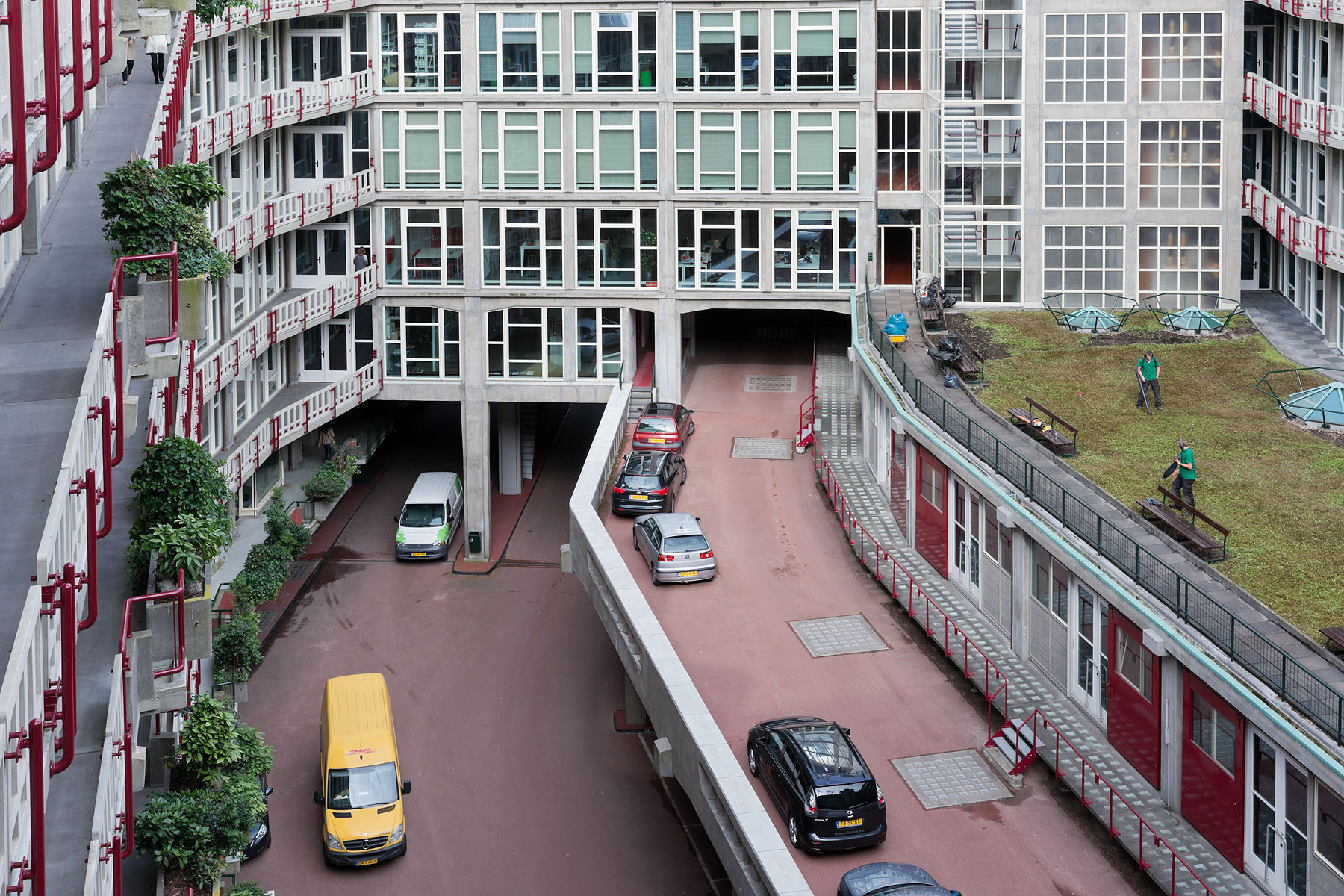
Book – Hugh Maaskant. Architect of Progress
A very special figure in the architectural history of the Netherlands has finally a architectural monograph dedicated to his work in a new international edition: Hugh Maaskant. Architect of Progres.
It is not just the architect Maaskant himself, but especially also the context he was working in and his home city of Rotterdam that makes this a very interesting and insightful book. Rotterdam was the very logic or ‘functional’ city with its strong focus on the port and its logistics and with this was the ideal context for the rational and functionalist strategies of Hugh Maaskant.
The story is beautifully put together and researched in detail by author Michelle Provoost who spent almost a decade researching and tracing Maaskant’s work finally summarising it in her PhD thesis that was originally published in Dutch as Hugh Maaskant. Architect van de vooruitgang (Hugh Maaskant. Architect of Progress).
The new international version of the book is also publisher by nai010 publishers, designed by Simon Davies with Stephanie de Man and also features an essay by photographer Iwan Baan.
 Image taken from baunetz / One of the court yards of the Groothandelsgebouw (1945-1953) today. Part of the photo essay by Iwan Baan.
Image taken from baunetz / One of the court yards of the Groothandelsgebouw (1945-1953) today. Part of the photo essay by Iwan Baan.
Provoost makes it clear that Maarkant was a modern architect and clearly saw himself as a modernist architect. However she ale points out that Maaskant did not share the ideological background with the modernist movement. Provoost claims that in Masaskant’s work social criticism is absent and “that he was not a ‘critical’ architect but a ‘consensual one.” (p. 13).
Interestingly, it appears that Maaskant did exclusively focus on construction and realisation. He was not interested in theory and intellectual reflection on his own work. He was a businessman with a keen sense for strategy and opportunities without artistic leanings.
 Image taken from fotorob on flickrFlu / Akragon (1955-1970) sports tower in Rotterdam by Hugh Maaskant.
Image taken from fotorob on flickrFlu / Akragon (1955-1970) sports tower in Rotterdam by Hugh Maaskant.
Nevertheless his work is still inspiring today. The clarity of his functionalism approach, the rigour of his style and the dedication to detail and design in his works are part of what makes the fascination. And this fascination is bleed, not only for architecture students, architects or architecture historians. The interest group is much larger. Michelle Provoost’s original Dutch publication was sold out within the first year. The interest in this period and Maaskant’s work in particular is amazing, his work is still captivating today.
 Image taken from Wikipedia, article ‘Scheveningse pier’ / Scheveningse pier (1954-1961) in Scheveningse by Hugh Maaskant.
Image taken from Wikipedia, article ‘Scheveningse pier’ / Scheveningse pier (1954-1961) in Scheveningse by Hugh Maaskant.
As Provoost points out in the preface, her work on Maaskant and the wider subject of urban planning in and around the city of Amsterdam has helped to shape a new approach to and appreciation of the past and lead to a number of MAAskant’s buildings being refurbished or reused, saving them from being replaced by a new wave of renewal. This kind of continuity might not be what Maaskant’s approach to architecture was in his time, but it is what we have learned from his work and what Provoost beautifully demonstrates in this book. It is not about critique but this lesson is about understanding the work in a wider context, commenting it to draw inspiration for the present.
 Image taken from naibooksellers / Book cover.
Image taken from naibooksellers / Book cover.
Provoost, M., 2013. Hugh Maaskant – Architect of Progress nai010 publishers, Rotterdam.
